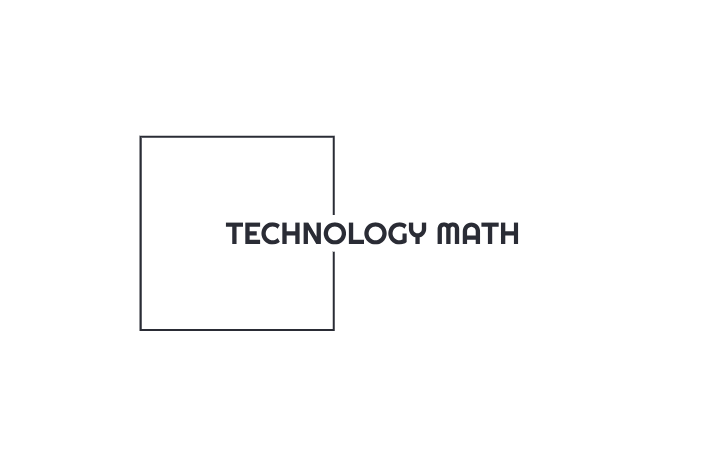
Artificial Intelligence (AI) and automation are no longer just buzzwords from the tech industry—they are rapidly transforming various sectors, including education. From streamlining administrative tasks to creating personalized learning experiences, AI and automation are changing the way we approach studying and education. But what exactly does this mean for students and educators alike? Are these technologies enhancing the learning process, or are they simply replacing traditional methods? In this article, we’ll explore how AI and automation are shaping the future of study and what this could mean for the world of education.
The Role of AI in Personalized Learning
One of the most exciting ways AI is revolutionizing education is through personalized learning. Gone are the days when every student had to learn at the same pace. Thanks to AI algorithms, learning platforms can now analyze a student’s progress, understand their strengths and weaknesses, and adapt the course material accordingly. This means that each student receives a tailor-made learning experience that suits their individual needs.
Think about it—if you’re great at math but struggle with history, AI can help by offering more challenging math problems while simultaneously providing additional support in history. These personalized learning environments ensure that students aren’t overwhelmed by the subjects they find difficult, nor are they bored with areas they excel in. It’s almost like having a tutor who knows exactly what you need and when you need it. But unlike a human tutor, AI is available 24/7, which is perfect for students who prefer to learn at their own pace.
One popular example of this is intelligent tutoring systems (ITS). These platforms use AI to mimic the one-on-one experience of a tutor, adapting to the student’s learning style and pace. They monitor progress in real-time, providing immediate feedback and suggestions for improvement. For instance, platforms like DreamBox or Carnegie Learning use AI-driven assessments to tailor lessons to the learner’s needs, making the learning process more efficient and targeted.
Automating Administrative Tasks: A Time-Saver for Educators
AI and automation aren’t just helping students—they’re a boon for educators as well. Teachers often spend countless hours grading assignments, tracking attendance, and managing paperwork. Automation tools are making these tedious tasks a thing of the past. With AI-powered grading systems, educators can quickly evaluate tests and essays with greater accuracy and consistency than traditional manual methods. This leaves more time for teachers to focus on what truly matters—interacting with students and improving the overall quality of their instruction.
One significant benefit of AI in this regard is its ability to grade not just multiple-choice questions but also essays. AI-driven platforms such as Turnitin and Gradescope can assess the structure, grammar, and even the coherence of written assignments. While these systems aren’t perfect yet, they are continually improving and can already handle the bulk of grading work for educators.
Moreover, automation tools can handle scheduling, attendance tracking, and even parent-teacher communication. Systems like ClassDojo allow teachers to streamline communication, share students’ progress, and even issue assignments in real time. This saves teachers valuable hours, reducing administrative load and allowing them to focus on lesson planning and personalized instruction.
Interpretation of Man and Machine
Artificial intelligence (AI) and automation are reshaping modern education by introducing personalized learning experiences, streamlining administrative tasks, and providing innovative tools for both students and educators. Despite these technological advancements, the human connection within educational settings remains paramount.
One enduring example of this human connection is the sharing of real student lecture notes. Graduate students often emphasize the value of authentic, peer-generated notes, suggesting that to find your study note on a specific topic, one should seek out notes from actual students. This practice underscores the importance of human involvement in learning, as these notes reflect personal insights and contextual understandings that AI cannot replicate.
The act of taking and sharing notes fosters a collaborative learning environment, enhancing comprehension and retention. Research indicates that note-taking encourages active engagement with material, leading to improved memory and understanding. Furthermore, collaborative note-taking has been shown to reduce individual cognitive load, making complex subjects more manageable.
While AI offers tools to facilitate learning—such as automated transcription services and personalized study plans—it cannot replace the nuanced understanding and personal connections that human interactions provide. The human element in education, exemplified by practices like sharing lecture notes, continues to play a crucial role in student development and success.
Smart Content: AI Creating Study Materials
AI is also making waves when it comes to the development of study materials. Imagine an AI system that can generate flashcards, quizzes, and even summarize textbooks. Well, that’s already happening. AI can sift through thousands of documents, analyze them, and create study guides or even mock exams tailored to specific courses or topics. This approach saves students time and effort, helping them focus on actual learning instead of spending hours combing through textbooks.
Take Quizlet as an example. While it started as a simple flashcard tool, it now incorporates AI to generate customized study sets based on the student’s current knowledge and progress. Even better, AI-driven tools like Scribbl can summarize long lectures or chapters into concise notes, making revision quicker and more efficient. Additionally, platforms like Knewton can adapt content in real-time, ensuring students get the right kind of practice to fill knowledge gaps.
Similarly, AI is also being used to create interactive content such as simulations and virtual labs, allowing students to engage with complex subjects like physics or chemistry in a hands-on way without needing a physical lab. These immersive learning experiences help students understand difficult concepts in a more tangible and engaging manner.
Enhancing Accessibility in Education
Another significant way AI is transforming the future of study is by making education more accessible to a broader audience. AI-powered tools are breaking down barriers, whether they’re related to language, disability, or location. For instance, speech-to-text technology can help students with learning disabilities take notes more effectively. Similarly, AI-driven translation tools can translate course materials into different languages, enabling students from non-English speaking backgrounds to access high-quality education.
Automation is also playing a role here, particularly in the form of online learning platforms. With the rise of Massive Open Online Courses (MOOCs) like Coursera, edX, and Udemy, students from all over the world can access the same educational resources as those attending prestigious universities. These platforms use AI to recommend courses, track progress, and suggest further learning pathways based on the student’s goals and interests.
Even better, AI-powered proctoring tools like ProctorU or ExamSoft ensure that students can take exams from the comfort of their own homes while still maintaining academic integrity. These tools use AI to monitor for suspicious behavior, ensuring that online exams are just as rigorous as those taken in person.
AI in Career Guidance and Skill Development
Beyond helping students succeed in their current studies, AI is also helping to prepare them for the future. Today’s job market is ever-changing, and students need to stay ahead of the curve when it comes to skill development. AI can assist by offering career guidance based on a student’s strengths, interests, and market trends. Tools like LinkedIn Learning and FuturusAI provide personalized career advice, suggesting courses or skills that are in demand and guiding students on their learning journey.
AI can analyze job market data to predict future trends and recommend the best courses or career paths for students based on their interests and abilities. For example, a student interested in cybersecurity could receive suggestions for relevant certifications or emerging trends in that field. Moreover, AI can even facilitate internships and job placements by matching students with potential employers based on their skill sets and learning histories.
Conclusion
AI and automation are reshaping the landscape of education in unprecedented ways. From personalized learning paths and smart content generation to automating tedious administrative tasks and enhancing accessibility, these technologies are making studying more efficient, engaging, and accessible for everyone. As we look to the future, the role of AI and automation in education will only continue to grow, offering students and educators new tools to enhance the learning experience.
The question is no longer whether AI and automation will change education—it’s how fast these changes will happen and how we can adapt to make the most of them. While there may be concerns about AI replacing traditional methods of teaching, the evidence suggests that, when used appropriately, AI has the potential to complement and enhance these methods, not replace them. The future of study is bright, and with AI leading the way, students and educators are in for an exciting journey ahead.






